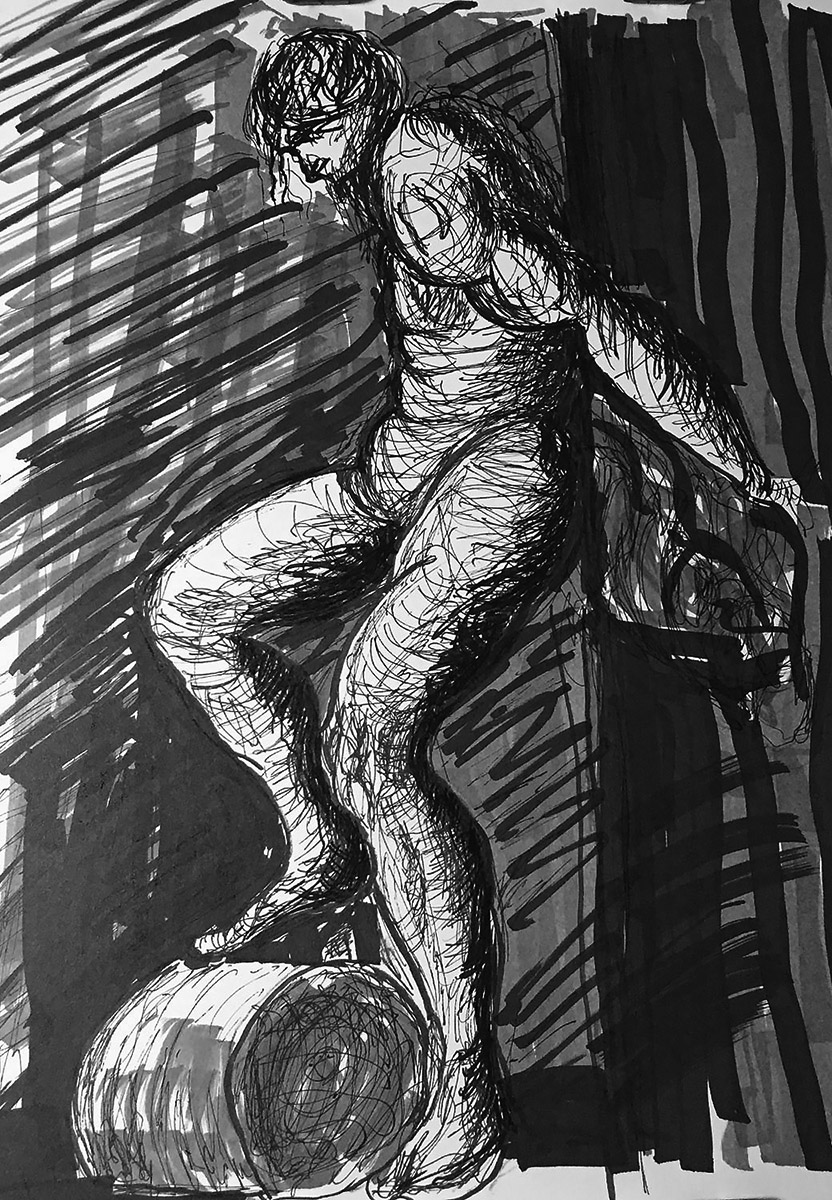
Above is a copy of a drawing by Titian titled “Study for St. Sebastian in the high altar of SS. Nazarro e Celso, Brescia”, created around 1519 to 1520, and drawn with brown ink, brown washes, heightened with white on grey-blue laid paper. Titian’s work was done with thick ink lines so I substituted my usual pencils with a gel ink pen along with an of assortment black and gray markers.
Tiziano Vecellio, simply known as Titian, was considered by many to be the greatest painter in Venice, Italy during the 1500s. He was born in Pieve di Cadore, a small town near the Alps, and then moved to Venice at the age of 10. He started his artistic training at the Sebastiano Zuccato workshop. Then went to work with Giovanni Bellini, who at the time was already a well known artist. Titian also worked alongside with Giorgione, who would greatly influence his style. Around 1511, Titian began an independent career in Venice. He went on to create the frescoes in the Scuola del Santo in Padua in what is known as his mature style. He became famous for his religious works as well as his portrait paintings. Titian continued to paint and his work was in high demand all across Europe. Around 1545, Titian traveled to Rome and met Michelangelo who greatly influenced his work. Throughout the rest of Titian’s life, his brushwork became looser and more expressive. Artists ranging from Sir Joshua Reynolds to Jean Auguste Dominique Ingres as well as the French Impressionists were all influenced by the work of Titian.
My former painting instructor, Bob Gross, also an excellent artist, was a big fan of Titian. Bob taught the painting techniques used by Titian and the other old masters. He would often talk about the glazes or thin layers of color that Titian layered on top of each other to create unique color combinations. Bob was an amazing teacher. Unfortunately he passed away earlier this year. Myself along with his other students will always remember his teachings and of course his fondness for Titian.
